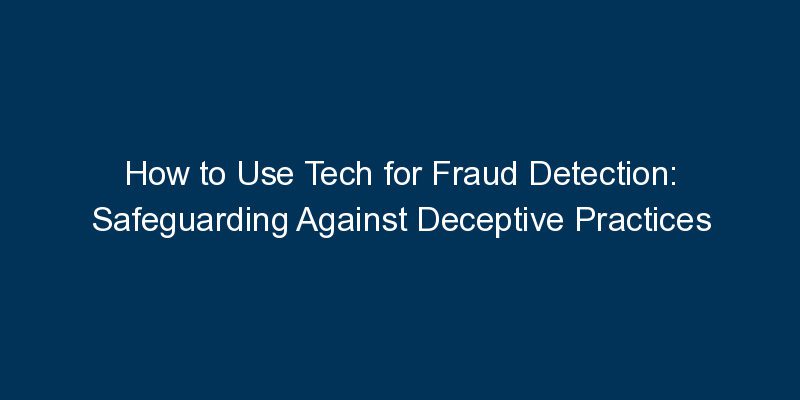Fraud detection is a critical application of technology, helping organizations safeguard against deceptive practices. This blog provides a comprehensive guide on how to use technology for fraud detection, empowering businesses to implement advanced tools and techniques to identify and prevent fraudulent activities.
Introduction:
As technology advances, so do the methods employed by fraudsters. Using technology for fraud detection is essential for organizations to stay ahead in the constant battle against deceptive practices. This guide explores the key steps in leveraging technology to strengthen fraud detection measures.
Key Steps to Use Tech for Fraud Detection:
- Data Analytics and Pattern Recognition: Utilize data analytics and pattern recognition techniques to identify anomalies and irregularities in transactional data. Implement machine learning algorithms to detect unusual patterns indicative of fraudulent activities.
- Behavioral Biometrics: Implement behavioral biometrics for user authentication. Analyze user behavior patterns, such as keystroke dynamics and mouse movements, to establish unique user profiles and identify suspicious deviations.
- Machine Learning Models for Predictive Analysis: Develop and deploy machine learning models for predictive analysis. Train models on historical data to predict potential fraud risks and enhance the accuracy of fraud detection algorithms.
- Real-Time Transaction Monitoring: Implement real-time transaction monitoring systems to identify and block potentially fraudulent transactions as they occur. Utilize automated alerts and triggers to facilitate rapid responses to suspicious activities.
- Geospatial Analysis: Incorporate geospatial analysis to identify unusual patterns related to the geographical location of transactions. Detect anomalies such as transactions from unexpected locations or multiple transactions from different locations in a short time frame.
- Collaboration with External Data Sources: Collaborate with external data sources, such as credit bureaus and fraud databases, to enhance the depth of data available for analysis. Integration with external sources provides a more comprehensive view of potential fraud indicators.
Conclusion:
Using technology for fraud detection is crucial in today’s digital landscape. By following the steps outlined in this guide, businesses can implement advanced tools and techniques to identify and prevent fraudulent activities, safeguarding their operations and protecting against financial losses.






















Comments